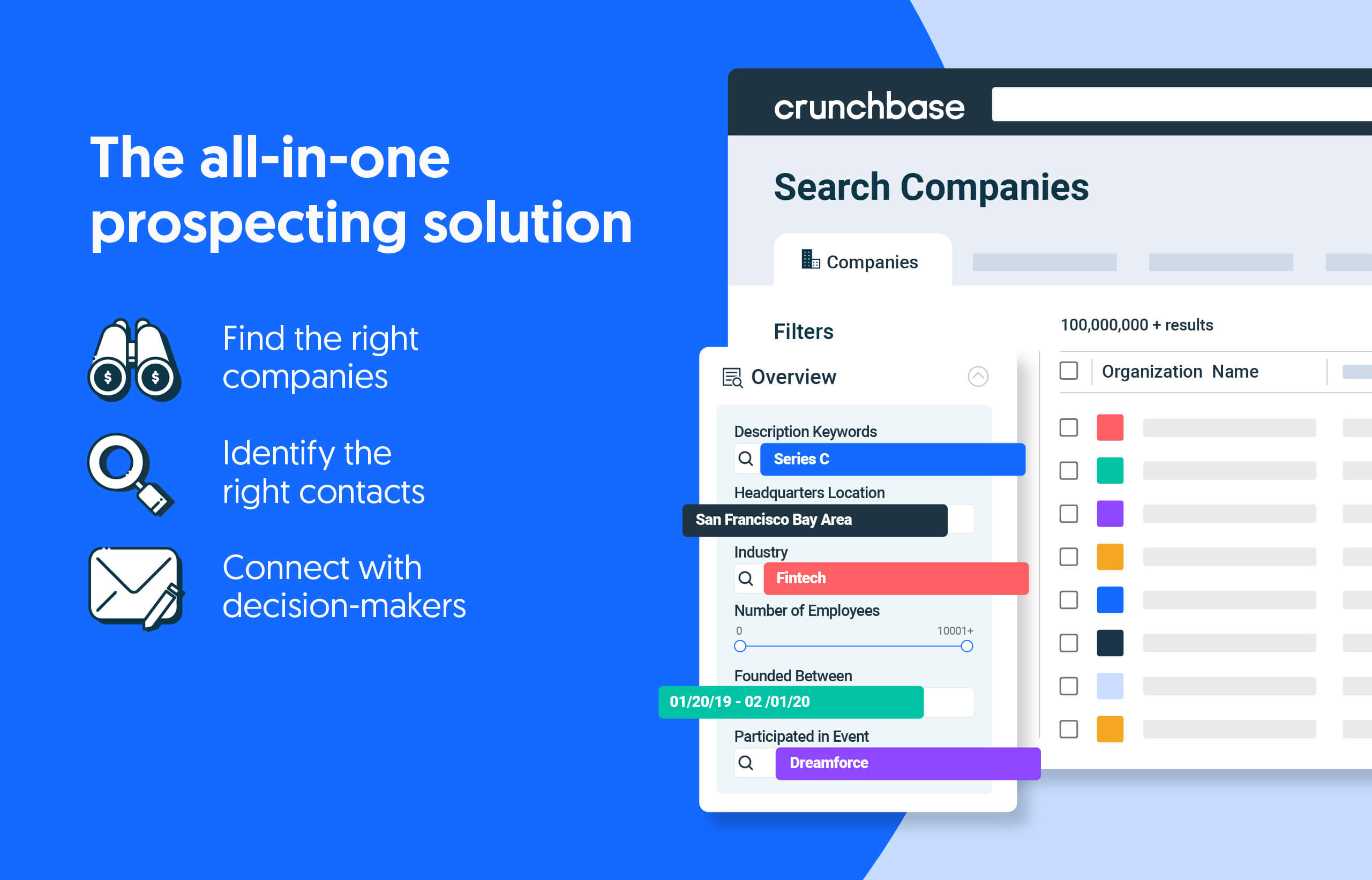Long ago, fact-checking website Snopes.com had to clarify an internet rumor that, no, fast-food restaurant KFC does not use lab-grown, genetically modified eight-legged lumps of pulsating chicken flesh devoid of feathers and beaks in its food.
Fast-forward to today: In November, the Food and Drug Administration announced Upside Foods’ lab-grown chicken is safe to eat.
Search less. Close more.
Grow your revenue with all-in-one prospecting solutions powered by the leader in private-company data.
It’s been a long road for Upside Foods, the first company in this space to receive venture funding back in 2015, per Crunchbase data. But the reality of a bustling, highly competitive lab-grown meat startup system is not dissimilar from the horrifying visual of KFC internet lore. Scientists can grow lumps of meat in petri dishes that can mimic chicken breast, steak, ground meat and even filets of salmon with just a few stem cells.
Funding in the cultivated meat space has reached $693.5 million so far in 2022. That’s the second-largest amount of funding per year in that industry after 2021, and represents a 208% increase from funding in 2020.
Plants vs. cultivated meat
It is interesting to see that plant-based food, often a concoction of soy proteins, fermented mushroom cells and seaweed, is still netting more money than cultivated meat. But it had a five-year head start; the first plant-based meat startups to get venture funding happened in 2010, per Crunchbase data.
The sector also encompasses a wider variety of foods like milk and eggs. But plant-based meat hasn’t been immune to the slew of logistical- and supply chain-related challenges that plague the food industry, and companies like Beyond Meat are struggling.
Everything around meat — maintaining a home for animals, feeding them, butchering them, packaging them and selling them — is simply an insufficient use of supply chain capabilities. Thirty-six percent of the world’s crop calories go toward animal feed, and animal farms contribute to soil degradation, deforestation and greenhouse gas emissions. A 2020 report from IDTechEx says, unequivocally, that “the meat industry is unsustainable” — especially as our population reaches 8 billion.
So perhaps it’s unsurprising that cultivated meat (a more palatable word for “lab-grown,” perhaps) is seeing investment from giant meat producers like Tyson Foods, Cargill and JBS. What if, instead of growing whole animals, we only grow the parts we eat?
This all sounds great, but we’re not sure how well cell-grown meat scales. We’re not even sure if, at full capacity, it will be that much cheaper or better for the environment than how meat is grown now. Cultivated meat requires lab space, disposable equipment (laboratories are notorious for using a lot of single-use plastic) and logistical operations to package and ship the meat as well.
In November, Upside Foods opened a 53,000-square-foot plant that produces 50,000 pounds of meat per year (for comparison, 50,000 pounds of meat equals roughly 113 cows, and 53,000 square feet is 1.2 acres).
The IDTechEx report does point out a rather obvious solution that’s much cheaper than cultivated meat. “Whilst many of the problems associated with animal agriculture could be solved by large percentages of the world’s population giving up meat, this seems extremely unlikely, regardless of the environmental or ethical reasons.”
Illustration: Dom Guzman

Stay up to date with recent funding rounds, acquisitions, and more with the Crunchbase Daily.



![Illustration of a guy watering plants with a blocked hose - Global [Dom Guzman]](https://news.crunchbase.com/wp-content/uploads/quarterly-global-3-300x168.jpg)
67.1K Followers